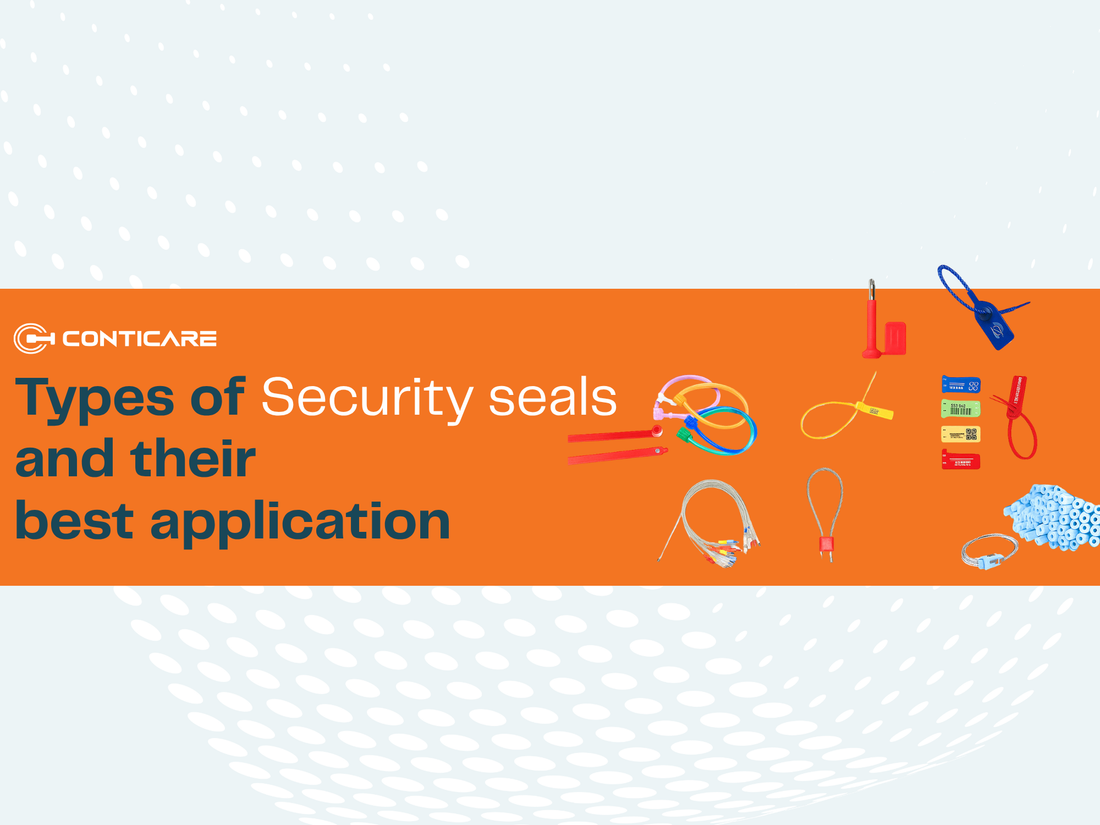
Types of Security Seals and Their Best Applications | Conticare
When we talk about protecting goods in transit or storage, security seals form an integral part of the supply chain. They provide overt evidence of tamper, deter theft, and maintain the integrity of your shipments. But with so many seals available, how do you determine what seal will be used by you? In this guide, we break down the most common types of security seals and where each will be deployed.
1. Bolt Seals
Appropriate for:
Valuable shipments, cargo containers, and shipping containers.
Features:
Bolt seals are manufactured from solid metal or heavy metal and are supplied with a locking barrel. They are designed to provide top-level physical security and are usually ISO 17712:2013 certified so they can be cleared through customs and shipped internationally.
Ideal when you need:
If you need utmost resistance to tampering and unauthorized access, bolt seals are the industry standard. They are used in ocean shipping, truck freight, and high-risk freight where regulation is necessary.
2. Plastic Security Seals
Suitable for:
Bags, containers, truck doors, and utility meters.
Features:
Plastic seals are inexpensive, light, and are manufacturable in both pull-tight (expandable) and fixed-length forms. They are usually marked with serial numbers or barcodes that make them traceable and recordable with ease.
Ideal when you need:
A low-cost, tamper-indicating solution for general use where moderate security is adequate. They are appropriate for warehouse storage, internal transportation, or tamper indication for non-high-value products.
3. Cable Seals
Heavy haul transport, tankers, railcars, and container doors.
Features:
Cable crimping seals consist of a steel cable and a metal locking body. The cable, once locked or crimped, cannot be reversed or altered in any manner without showing any sign.
Ideal when you need:
A robust but elastic solution for more locking points or long-distance transportation. Cable seals are commonly used in the chemical, petroleum, and logistic industries, where additional protection is required.
4. Wire Seals
Recommended for:
Utility meters, drums, and valves.
Features:
Wire seals consist of a metal locking system and a wire loop that can be customized according to length. They also provide clear signs of tampering after being sealed.
Ideal when you need:
A seal to cover up irregularly shaped locking points or where space is limited. Wire seals are used extensively in the utilities industry, chemical plants, and barrel or drum sealing.
5. Barrier Seals
Suitable for:
Overseas shipping and dangerous cargo containers.
Features:
Barrier seals are all-metal, strengthened seals that physically prevent unauthorized access. They tend to be hard to cut using bolt cutters or other devices, thus a suitable deterrent to theft.
Ideal when you need:
Maximum physical security for export containers, rail cargo, or valuable cargo. They are normally applied in conjunction with other seals and offer double-layer protection.
Last Word:
Selecting the appropriate security seal is based on your commodity type, risk, shipping route, and regulation level within your industry. Spending money on the right kind of seal not only guards your commodities but also keeps you compliant with regulations and satisfies your customers. If you are not sure which seal is right for you, call our specialists today. We can assist you in making the correct choice for your particular application.








